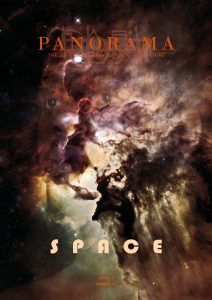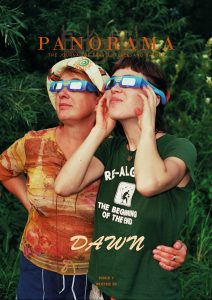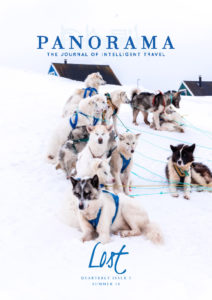The White Castle by Orhan Pamuk is a mystifying tale of confused identity, self-reflection, and a world caught between two versions of itself. More than that, it’s a meditation on modern Turkish culture and its complex relation to the West, a cultural and psychological deliberation written in a way that evaded the censors of the day.
The Republic of Turkey was founded by General Ataturk after the Great War. The state was conceived as a modern secular entity with Western aspirations. Ottoman tradition was shed in favour of a progressive outlook. Religion was separated from state affairs, and the Turkish alphabet adopted Latin characters. Turkey was transformed ‘overnight’ into a Europe-oriented nation, opening a new cultural front, and over time became an entity caught between East and West, between tradition and change, self and other. This is the underlying basis of The White Castle, and it is given through the interaction of the Italian narrator and the Turk Hoja.
The story takes place in 17th-century Ottoman Empire. “We were sailing from Venice to Naples,” the narrator says, “when the Turkish fleet appeared … We were caught in a violent broadside volley – our ship would surely sink if we did not give up at once – we decided to raise the flag of surrender.”
Even though the narrator, a scholar, is taken to Istanbul and sold as a slave, a type of quietude overcomes him, to which he resigns himself without hesitation. But when he ends up in the hands of Hoja, a man who, as fate has it, is his doppelganger, life takes a turn for the bizarre.
According to the narrator, Hoja – which means Master in Turkish – is a peculiar fellow, aloof, self-involved, obsessive, and self-hating. He is a curious man, progressive in relation to his fellow countrymen and -women, but arrogant and troublesome. He respects neither the common folk nor the administrators of the city, and deems the Ottoman Empire backward and prejudiced. Even so, he seeks the imperial court’s approval. Desperate to climb the ladder and become part of the elite, he will do anything to catch a break and gain the Sultan’s favour. The Sultan is a young boy, not of age yet, and Hoja is eager to befriend the young ruler and convince him to modernise the empire.
The court is a tough place to infiltrate. No one understands Hoja’s claims on the stars and their motions, or the possibility that the earth revolves around the sun, and that the heavens are not made of spheres from which celestial bodies hang – that the heavens are in fact defined by invisible forces that hold the universe together. Everyone’s pattern of thinking, Hoja surmises, is complacent and unable to grasp the world as it truly is. The court officials, in their collective ignorance – like the masses below them – are living in ignorance, inside which they are trying to absorb him, desperate to turn him into one of them, Hoja feels.
To increase his chances of impressing the Sultan, Hoja engages in long conversations with his Italian captive, from whom he extracts useful scientific and personal information.
The discussions prove enlightening. Some of the data corroborate Hoja’s own theories, which inflate his ego even more, while much of the information is new, unheard of, as unnerving to him as it is to those he subsequently preaches it to.
The interaction between captor and captive becomes a test of character for both individuals. Acting as each other’s mirror, the two savants are forced to come to terms with parts of themselves they had not heretofore faced. The ambitious master, challenged by his learned captive, has an especially hard time reconciling his limitations with the world’s awesome potential. The Italian points out his faults, but Hoja rejects all feedback, finds no fault in himself, only in others. Forever looking to gain the advantage over his surroundings, he twists the knowledge he acquires to suit his needs and manipulate others.
Tormented by the very knowledge he pursues, Hoja drives himself deeper inside his insecurities and self-loathing, feeding his self-hatred, his revulsion for his culture, his heritage, even his Italian teacher, whom he secretly holds in high esteem. He loves the Italian and despises him at the same time, much as a child adores and loathes a stronger and more informed sibling.
The Italian, in turn, wishes to escape Hoja’s shadow. He cannot abide by his master’s whimsical and cruel nature, and yet he develops a strange affinity for him. Just as Hoja needs his knowledgeable hostage, the Italian needs his captor. Made manifest is a case of Stockholm Syndrome. The Italian’s burning desire to regain his freedom is tempered by a peculiar sense of belonging. He thinks of his master with fondness. He is relieved when Hoja tracks him down after a failed escape attempt, and is glad to be brought back ‘home’.
But that doesn’t change the fact that the Italian is a slave. Hoja, desperate for control, plays nasty mind games with his captive. When the bubonic plague breaks out, the Italian declares that the disease is contagious, and that they should remain indoors, and Hoja responds by roaming defiantly the disease-ridden streets and then touching the Italian, taking pleasure in frightening him. He calls the Italian an infidel and a coward, and invokes God in ways that contradict his sceptical outlook. He taunts the Italian with threats, tells him he will possess his spirit, even take his place.
To deal with his anxiety, the Italian embraces his situation and launches his own counteroffensive. He plants ideas in Hoja’s mind, all of them scientific, all of them geared to invoke a type of thinking the Italian can live with.
*****
Through this rancorous interaction, Pamuk seems to be addressing the complexity of sibling dynamics. In a Paris Review interview he noted that his theme of impersonation was inspired by his relationship with his older brother, which was riddled with jealousy and admiration. The two competitive siblings were different in many ways (Pamuk liked games, his brother preferred rules), and the motifs of resemblance, identity overlap, rivalry, conflict, dependence, and existential crisis, and the volatile and almost sadomasochistic arrangement between The White Castle’s protagonists, would appear to have their roots in that complicated relationship.
But there’s more to the book than the psychology of twin-like characters engaged in a game of cat and mouse. Pamuk, through Hoja and the Italian, is speaking about the Turkish psyche in general. Their relationship is a metaphor for the complex dynamics behind Turkey’s ambition to be accepted by Europe; an exploration of a traditional state with Western aspirations.
The device is seamless and effective. Pamuk discusses modern Turkey’s polar state of mind and the tumultuous psychology that comes with it through a historical setting that focuses on the scientific and technological shortcomings of 17th-century Ottoman Empire (a stand-in for the Turkish Republic). The Empire is in desperate need of modernisation, and Hoja is the one who pushes for change against the wishes of the majority, the Italian supporting him from the shadows.
One could read this setup any number of ways, involving anything from political intrigue and geopolitical allegory to symbolic interactionism.
Most telling of all is the way the characters themselves act and react. Hoja, in a cruel spell of irony, is tormented by the knowledge he endorses, caught in an existential gauntlet that undermines his sense of identity. His uncanny resemblance to the Italian scholar makes matters even worse. The slave, valuable as he is, is an ironic reminder of what Hoja may one day become, should the Empire catch up with Europe – and Ottoman ignorance is eliminated – or, if no progress is made at all, he toys with the idea of abandoning his land of birth and emigrating to Italy.
The years pass, and Hoja manages to befriend the Sultan. Aided by the Italian, he proceeds to lecture the despot on the minds of men, the instincts of beasts, the wonders of science and technology, even the stars themselves.
The Sultan, although positively disposed to some of the new ideas, is not swayed by their impact. He acts on them on whimsy, if at all, and little progress is made. The imperial circles wax and wane around this petulant sovereign whose inclinations favour hunting and philosophy more than the office of government. Hoja’s plans fail to materialise. He has indeed moved up the ladder, but nothing of great consequence has changed. His mindset is torn over two irreconcilable viewpoints – science-driven scepticism and God-fearing traditionalism, depending on the circumstances – earning him the scorn of his neighbours and almost everyone he knows. He grows older and more jaded, speaking of fools who understand nothing, of ‘us’ and ‘them,’ of all the things one needs to know to become a better person, of all the thoughts that go through one’s mind, of all the memories that make up one’s life, and, in the end, of stories that help their author understand what he has experienced in life – things he deems crucial to his development. The need for taking transcripts to accommodate the growing information. The fears and aspirations that drive a person to excellence. Hoja obsesses over these issues, desperate to make sense of his life, trying to remember what he may have forgotten or dismembered over the years. He forces these insights on his doppelganger, anxious to make him understand, too.
By default, the Italian’s plans have also been frustrated. Science is not advancing, change is not being made, and Hoja is neither triumphing nor collapsing, either of which outcomes might have led to freedom.
Stretched out on a circle of moderate highs and lows, life drags on. The two doppelgangers cannot escape each other’s influence. Locked in a pattern, they merge psychologically.
*****
Over and above the sublime mind games and the existential tarantella the protagonists are engaged in, Pamuk’s story operates on a cultural and quasi-historical level, as already mentioned. The metaphor on Turkish identity and psychology is striking, and because it can be tricky to address one’s cultural identity in critical terms, the author uses another astute device: an external perspective, namely, the narrator – an Italian Christian i.e. an infidel among Muslims, a shameless outsider. No one can hold this character’s words and perspective against the author himself.
The device works. It offers Pamuk latitude to explore aspects of Turkish history, society, and identity in ways that he would not be able to had he written an essay or novel from his personal (or a Turk’s) point of view. It’s important to note that The White Castle was published in 1985 when it was dangerous to be critical of Turkish culture (now it’s more so than then). Freedom of the press did not apply in cases where the state, its founders, or Turkish identity and history in general were deemed to be insulted. If an author wished to make a critical point on the subject matter but escape the censor – or a grave destiny – one had to be inventive with one’s narratives. Pamuk’s Borgesian, quasi-historical, almost surreal style added the padding needed to soften the novella’s content. The setting was real enough to deliver its message, but not real enough to invite the ire of would-be censors and autocrats.
Although a novella, The White Castle’s narrative spans a number of decades, making possible the convincing merger of the protagonists. The writing is pensive, and the result is one of parochial ambience that is deftly, and with erudite precision, interspersed with passages overflowing with passion and ferocity, explosive in nature, dominated by political and psychological intrigue, by characters whose lives clash like clouds in a storm, much like the civilisations they represent. Hoja and the Italian represent the clash between tradition and enlightenment, research and blind faith, the ‘occidental’ and the ‘oriental’, and if these divisions sound ham-fisted by today’s standards, perhaps even stereotypical, it’s worth noting that Pamuk raises them with authority. In Turkey they were real issues when he wrote about them, and still are. The divide between East and West dominates the national/cultural debate to an extent not readily understood by those not familiar with Turkey. The narrative sheds light on these conflicts, and on the fragility of Turkishness as an identity, the way in which its members – and state – relate to other cultures, especially when looking westward, toward Europe, a world that Turkey – according to Pamuk’s subtext – both craves and loathes to be a part of.
The novella, though courageous and inventive – if not precisely because of these very qualities – can be frustrating and confusing. Pamuk’s incisive yet fantastical frame at times feels contrived and circular, repeating the same motifs: Hoja and his slave are at odds; they work on a specific project, each to their own ends; they achieve something, which opens up new possibilities for them, then gain an official’s favour, which results in ‘Hoja’ rising in stature, only to meet with disappointment and falter, slump, fall, and fade to the edge of the imperial circle, their anguish now a test on their relationship. After taking it out on each other a hiatus follows, and after that a new task presents itself, which brings about a new initiative, another upturn, etc.
The circles are laborious, and yet it is through this laborious and repetitive turn of events, this rumination of character and psyche that the two protagonists assume each other’s identities to the extent that everyone’s understanding of them – the reader included – is hazy. In time, Hoja and the narrator become an inseparable entity working its way through the Ottoman Empire. Where one ends, the other begins, and they have spent enough time with each other for the premise to feel convincing.
The palindrome gives rise to a myth, one where the Muslim and the infidel, the slave and the master, the insider and the outsider come together. Their differences and conflicts give way to a remarkable bond. It’s not so much about the bridging of religious differences, or the erasure of religion altogether, as it is about ‘otherness’. Hoja and the Italian represent two antithetical, yet, partially compatible forces. Self meets Other, curiosity sparks interaction, knowledge begets knowledge, fear induces fear and suspicion leads to inventiveness that galvanises the protagonists. Their will to survive coaxes them into using each other’s attributes to augment each other’s lives.
*****
The story finishes in the shadow of a white castle in the land of the Poles where the Sultan has led his ambitious military campaign. The super-weapon designed by Hoja and the Italian doesn’t live up to the task. It gets stuck in a swamp, and the campaign ends in failure.
There, in the wake of defeat and shame, the Italian and Hoja switch places again, this time for keeps. Hoja takes off for Italy, and the Italian stays behind.
When we rejoin the story many years later, the narrator is living out Hoja’s life in the Ottoman Empire, and refers to his counterpart as ‘He’, and speaks about Him with the Sultan, with a travel author, with just about anyone who asks about Him. Some people suspect that a switch has taken place, but nothing is brought to a head. The illusion is maintained. The charade takes over, and the narrator is over time unable to tell whether his past life in Italy was real or just a story he invented. He can’t even be sure if He was real.
In fact, we get the feeling that the whole story may be the narrator’s fabrication, an extension of a man’s wild imagination and his burning desire to travel mentally, get involved with outlandish characters, explore oneself and one’s surroundings in a way reality would never permit – a vicarious experience of something grander than what he had been bequeathed. A way to give meaning to his past life.
The questions, of course, mount:
Has one character made the other up?
If there are two characters after all, who is ‘He’? Hoja or the Italian?
Who, in other words, is the narrator?
Pamuk offers no answers or resolutions. He leaves us guessing, and, most likely, eager to reread the book, or ask someone who’s read it.
Herein lies the genius of the narrative. It makes one re-evaluate the text and seek out fresh perspective. Things are not always understood on the first attempt, Pamuk tells us in so many words. To understand something we must revisit it, and even then its meaning may evade us. What matters is the experience, the imagination that drove it, the ability to reflect on it and make sense of it.
The narrative succeeds precisely because it refuses to provide clear answers. Delivered through the recounts of a narrator revisiting his torturous but in hindsight eventful and cherished life – a period in which anything that ever mattered to the narrator took place, all of it in the unnerving but fulfilling company of that ‘other’ (whether ‘He’ was real or imaginary) – The White Castle offers the reader a chance to understand not only what it means to be Turkish, not only how we are all the same even when we are different, but also how everything is a result of stories, and that stories in whatever form have the power to shape us even as we’re shaping them.











